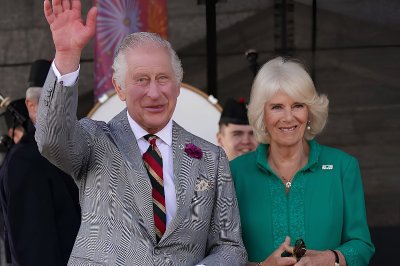Topic: Westminster Abbey
The Collegiate Church of St Peter at Westminster, popularly known as Westminster Abbey, is a large, mainly Gothic church, in Westminster, London, England (UK), located just to the west of the Palace of Westminster. It is the traditional place of coronation and burial site for English, later British and later still (and currently) monarchs of the Commonwealth realms. The abbey is a Royal Peculiar and briefly held the status of a cathedral from 1546 to 1556.
Westminster Abbey is a collegiate church governed by the Dean and Chapter of Westminster, as established by Royal charter of Queen Elizabeth I in 1560, which created it as the Collegiate Church of St Peter Westminster and a Royal Peculiar under the personal jurisdiction of the Sovereign. The members of the Chapter are the Dean and four residentiary Canons, assisted by the Receiver General and Chapter Clerk. One of the Canons is also Rector of St Margaret's Church, Westminster, and often holds also the post of Chaplain to the Speaker of the House of Commons. In addition to the Dean and Canons, there are at present two full-time minor canons, one precentor, the other succentor. The office of Priest Vicar was created in the 1970s for those who assist the minor canons. Together with the Clergy and Receiver General and Chapter Clerk, various Lay Officers constitute the College, including the Organist and Master of the Choristers, the Registrar, the Auditor, the Legal Secretary, the Surveyor of the Fabric, the Head Master of the Choir School, the Keeper of the Muniments and the Clerk of the Works, as well as twelve Lay Vicars and ten of the choristers and the High Steward and High Bailiff. There are also forty Queen's Scholars who are pupils at Westminster School (the School has its own Governing Body). Those who are most directly concerned with liturgical and ceremonial matters are the two Minor Canons and the Organist and Master of the Choristers.
According to a tradition first reported by Sulcard in about 1080, the Abbey was first founded in the time of Mellitus (d. 624), Bishop of London, on the present site, then known as Thorn Ey (Thorn Island); based on a late tradition that a fisherman called Aldrich on the River Thames saw a vision of Saint Peter near the site. This seems to be quoted to justify the gifts of salmon from Thames fishermen that the Abbey received in later years. In the present era, the Fishmonger's Company still gives a salmon every year. The proven origins are that in the 960s or early 970s, Saint Dunstan, assisted by King Edgar, installed a community of Benedictine monks here. A stone abbey was built around 1045–1050 by King Edward the Confessor as part of his palace there and was consecrated on 28 December 1065, only a week before the Confessor's death and subsequent funeral and burial. It was the site of the last coronation prior to the Norman conquest of England, that of his successor Harold II. From 1245 it was rebuilt by Henry III who had selected the site for his burial.
It uses material from the Wikipedia article "Westminster Abbey."














